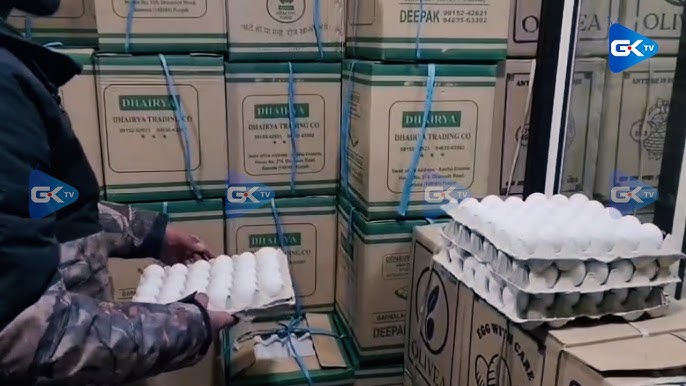Home & Vehicle Loans in Kashmir: A Never-Ending Trap? Why—and How—Do Kashmiris Get Hooked?
By: Javid Amin | Srinagar | 29 July 2025
Dreams for Sale—And the Real Cost
In modern-day Kashmir, the glow of a new house or the glint of a car isn’t just about property or mobility. It’s an identity badge, social currency, and for many, proof of “making it” in a society shaped by deep cultural roots and aspirational modernity. Walk through Srinagar’s bustling commercial corridors or villages in Anantnag and Baramulla, and you’ll see the symbols everywhere: new construction, luxury SUVs, busy appliance showrooms.
Banks, quick to spot this hunger, offer easy EMIs, low down payments, and glossy pitches that make it all seem within reach. But behind this prosperity façade, thousands of families are walking a financial tightrope—one misstep away from a decade of anxiety, debt, and loss. Loans, meant to be stepping stones to a better life, often become shackles, quietly transforming celebrations into decades of stress—and for too many, disaster.
The Kashmiri Mindset: Why Loans Hook So Hard
01. Cultural Aspirations Meet Modern Marketing
-
Status Symbol Pressure: The idea of home and vehicle ownership is baked deep into the Kashmiri psyche. Weddings, festivals, and even casual conversations revolve around the currency of property and possessions. Owning a home—or gifting a car—proves you’ve “arrived.” Not having one can mean social exclusion.
-
Societal Comparison: Society’s expectations are powerful motivators. Families don’t just participate—they compete. Bigger, fancier, newer is better, so when a neighbor upgrades, others feel compelled to follow suit.
-
Aggressive Bank Marketing: Banks and NBFCs, eager to grow, dangle offers—zero processing fees, flexible repayment, EMI holidays—making borrowing look risk-free.
02. Emotional Decisions Trump Financial Logic
-
Heart Over Head: Choosing to buy a house or vehicle is often guided by emotion: the joy of giving, the pride of ownership, even the nostalgia of “giving back” to parents. In such moments, calculations about long-term interest or hidden costs fade into background noise.
-
Family First: A daughter’s wedding, a son’s ambition, or a parent’s comfort—these drive financial decisions that often ignore sustainability.
03. The Illusion of Affordability
-
EMI Culture: The magic number is the monthly EMI, not the total cost. “If I can pay ₹15,000/month, I can afford this car!”—until future emergencies, rising rates, or job loss shatter that illusion.
-
Long Loan Tenures: Home loans for 15-25 years, with variable rates, make “affordable” purchases twice as expensive over time.
04. Financial Illiteracy: The Silent Enabler
-
Few Know the Real Math: Most borrowers don’t read loan agreements or truly understand compound interest. The result? They’re shocked when years of payments barely dent the principal.
-
No Guidance: Formal financial advice is rare. Decisions often rely on hearsay or what a friendly banker suggests.
-
Lack of Curriculum: Financial literacy is not taught in most schools; money is a taboo subject in many homes.
05. Limited Alternatives for Wealth Creation
-
Job Scarcity: High youth unemployment means entrepreneurial risk-taking is high, but so is business failure, especially when startups are launched with loan capital rather than savings or investment.
-
Few Investment Avenues: Fixed deposits, gold, and land remain popular but inflexible. So for those looking to “grow fast,” borrowing feels like the only way up.
Why It Feels Like a Trap: The Anatomy of Debt in Kashmir
01. High Interest Rates, Volatile Markets
-
Interest Rate Shocks: Home and vehicle loan rates in the Valley can fluctuate, especially as repo rates rise. Fixed teaser rates often reset higher after a few years.
-
Market Uncertainties: Seasonal job losses (e.g., tourism, fruit trade) and political disruptions can mean sudden inability to repay.
02. Rising Living Costs, Stagnant Salaries
-
While cost of everything—milk, fuel, education—increases, most private sector salaries barely keep up. This leaves less headroom for EMIs; a single medical bill can trigger default.
03. Debt Recycling: One Loan to Pay Off Another
-
Many Kashmiris take new loans (or pawn valuables) to settle older debts. Borrowing to “clear” borrowing traps families in cycles stretching across generations.
04. Mental Strain & Community Stress
-
Money troubles rarely stay private. Family quarrels, reduced quality of life, and even mental health crises—from anxiety to depression—are now routine in households burdened by unpaid loans.
-
Psychologists report a sharp spike in financial stress-related symptoms: sleeplessness, irritability, and breakdowns, especially among youth and breadwinners.
05. The Illusion of Ownership
-
Home, But Not Really Yours: Until your loan is paid in full (often after 20+ years), the bank is the true owner.
-
Repossession Trauma: Missed payments can mean losing hard-earned assets. For many, this risk is a new, bitter reality.
The Human Stories Behind the Statistics
01. The Wedding Debt Spiral
Weddings in Kashmir are monumental social affairs. Lavish feasts, designer clothes, and extravagant venues are the norm. The result? Loans as high as ₹10 lakh for a single event. And if you default, the shame is public—making future borrowing (for real needs) harder and damaging family status.
02. Businesses Built on EMI Survival
Small businesses—restaurants, boutiques, even apple orchards—are launched every month by young Kashmiris with bank loans. When sales dip or seasons change, their priority becomes paying EMIs, not building the business. The shop may stay open only to serve the bank, never breaking even.
03. Transporters on the Brink
Transporters and drivers, once economic pillars, now face mass defaults. Thousands are unable to keep up with vehicle loan payments as tourism falls, fuel prices rise, and old vehicles lose market value.
The Power—and Weakness—of the Legal System
Recent court judgments have sped up recovery actions for defaulted loans in Kashmir. The SARFAESI Act, once rarely invoked, is now used widely, allowing banks to seize mortgaged property without lengthy court battles. For families, this means the humiliation and grief of losing ancestral land or homes can happen much quicker than before.
The Silent Suffering: Mental and Social Fallout
Financial stress doesn’t just impact bank statements—it plays out in the body and mind:
-
Mental Health Crisis: Psychologists report surging demand for therapy related to debt-related anxiety and depression.
-
Community Breakdown: The ripple effect spreads—family relationships strain, children’s studies suffer, and social gatherings dwindle under the weight of embarrassment.
Breaking the Cycle: Solutions for Individuals & the Community
01. Community Dialogue: Redefining Success
-
Normalize Renting: Celebrate flexibility and financial prudence over risky “ownership.”
-
Celebrate Modest Living: Community leaders and influencers should highlight stories of debt-free or low-debt living, shifting prestige away from flashy purchases.
02. Financial Literacy Drives
-
Schools, NGOs, banks, and even local businesses must invest in real, accessible financial education—how to read loan documents, calculate debt cost, and distinguish “want” versus “need”.
03. Promoting Local Entrepreneurship—with Caution
-
Support startups, but with a focus on realistic planning and gradual scaling—AND education about the dangers of over-leverage.
04. Creating More Investment Avenues
-
Encourage youth to explore savings, mutual funds, micro-investments, and equity—so loans are a last resort rather than a default option.
Best Practices: Practical Steps for Kashmiri Borrowers
-
Do Your Homework: Always read the fine print. Ask the bank about rate resets, penalties, and foreclosure terms.
-
Calculate the Real Cost: Use online EMI calculators. Factor in salary increases, possible job loss, and family emergencies.
-
Emergency Fund: Build at least six months’ expenses before taking a major loan.
-
Avoid Loan “Stacking”: Don’t take a new loan to cover an old one.
-
Seek Advice: Talk to financial advisors, not just loan agents.
-
Speak Up: Don’t be afraid to discuss debt struggles with community leaders or counselors. Silence makes the problem worse.
Frequently Asked Questions (FAQ)
Q: Why do so many Kashmiris take home and vehicle loans?
A: Social status, family expectations, and aggressive marketing make loans tempting. For many, it feels like the only way to “make it.”
Q: What makes loan repayment so difficult?
A: Hidden interest spikes, job loss, lack of financial planning, and rising living costs turn manageable EMIs into lifelong burdens.
Q: How does this trap affect families?
A: Stress harms family relationships, mental health, and can cost ancestral assets.
Q: What if I can’t repay my loan?
A: Contact your lender immediately. Early settlement or restructuring is easier before default. Avoid informal lenders or loan sharks.
Q: How can communities break this cycle?
A: Promote financial literacy, open conversations about debt, and celebrate modest, debt-free living.
Bottom-Line: The Road Ahead
Kashmir’s changing landscape offers unprecedented choices—and risks. Home and vehicle loans can elevate a family, but only when approached with awareness, planning, and community support. The choice isn’t just between renting or owning; it’s between financial stability and a legacy of anxiety.
Let’s shift the conversation—from what you own, to how securely you live. Only then will dreams stop turning into debts, and success finally mean peace of mind.




